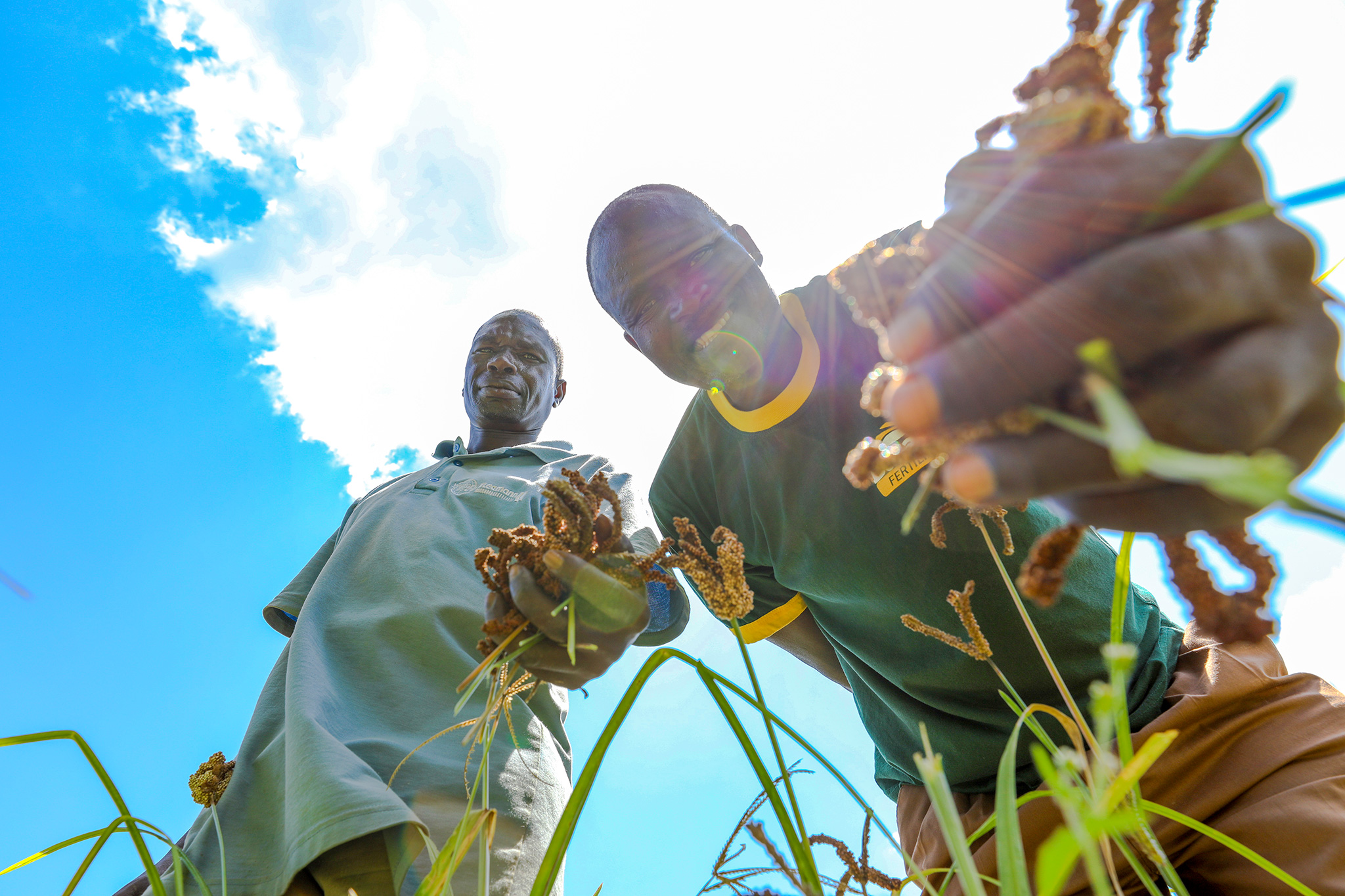Scientific name: Eleusine coracana.
Common name: Ragi, Nachni (Hindi)
The ICRISAT Finger Millet Breeding Program, operating in both India and Kenya, has significantly contributed to the global distribution of germplasm and breeding lines in recent decades. Through these efforts, several promising and widely adapted finger millet cultivars with enhanced yield and nutritional content have been released and successfully adopted in various countries.
ICRISAT's commitment to finger millet research and breeding has contributed significantly to the development and dissemination of improved cultivars globally. These achievements underscore the organization's dedication to promoting sustainable agriculture, enhancing nutritional value, and bolstering food security in regions where finger millet plays a critical role in supporting livelihoods and dietary needs. The continuous efforts of the Finger Millet Breeding Program continue to have a profound impact on agricultural communities, fostering resilience and progress in the face of agricultural challenges.

The program's achievements have been notable, and some key highlights include:
High Iron Variety 'NAROMIL 3' in Uganda: ICRISAT's breeding efforts led to the release of 'NAROMIL 3,' a finger millet variety with elevated iron content. This significant advancement addresses nutritional deficiencies and supports efforts to combat iron deficiency anemia in regions where finger millet is a dietary staple.
High Protein Content Varieties 'NAROMIL 5' and 'EUFM-401': In Uganda and Kenya, respectively, ICRISAT introduced two high-protein content finger millet varieties, 'NAROMIL 5' and 'EUFM-401.' These varieties hold the potential to enhance the protein intake and nutritional status of communities, thereby contributing to improved health and well-being.
'Snapping Finger Millet' (EUF 05) in Kenya: ICRISAT successfully released 'EUF 05,' also known as 'snapping finger millet,' in Kenya. This variety offers ease of harvest, making it more convenient for farmers and supporting increased productivity in finger millet cultivation.
High Yielding Varieties in Malawi: ICRISAT's breeding program yielded three high-yielding finger millet varieties, namely ACC 14FMB/01WK, KNE 688, and P224, which were released in Malawi. These varieties are crucial in addressing food security challenges by increasing finger millet production and securing better harvests for farmers.
ICRISAT's breeding program stands committed to continually assessing and updating the market segments for each crop in close collaboration with various stakeholders. These well-defined market segments play a pivotal role in prioritizing essential breeding traits, addressing the prevailing challenges that jeopardize crop production, and aligning with the preferences of farmers, consumers, processors, and other vital actors in the agri-food value chain.
In the case of finger millet, ICRISAT's breeding program presently concentrates on two distinct market segments to cater to the diverse needs of different agro-climatic regions:
Short-Duration Finger Millet Varieties for Semi-Arid Areas (for food): To bolster agricultural resilience in semi-arid regions, ICRISAT's focus is on developing short-duration finger millet varieties. These cultivars are well-suited to regions with limited water availability and unpredictable rainfall patterns. By optimizing the maturity duration, grain yield, and stover yield of these varieties, farmers can expect improved productivity even in challenging environments.
Medium- to Long-Duration Finger Millet Varieties for Sub-Humid and High-Altitude Areas (for food and malting): In sub-humid and high-altitude regions, ICRISAT is directing its efforts towards medium- to long-duration finger millet varieties. These cultivars are tailored to thrive in areas with relatively better moisture conditions and varying altitudes. Apart from ensuring food security, these varieties are also suitable for malting purposes, adding value to the crop and diversifying its potential uses.
The key traits being considered under these market segments encompass a range of factors crucial for the success of finger millet cultivation in these specific regions. These traits include maturity duration, grain yield, stover yield, blast resistance (to counter a common disease threat), synchronous maturity of tillers (promoting uniformity in crop development), calcium content (important for nutritional enrichment), and seed color (aesthetic and market preferences).
ICRISAT's diligent attention to these market segments and the associated traits serves as a strategic approach to ensure that finger millet breeding aligns precisely with the needs and challenges faced by farmers and consumers. By emphasizing these specific market segments, ICRISAT seeks to contribute significantly to agricultural sustainability, food security, and enhanced nutrition in regions where finger millet plays a critical role in livelihoods and local food systems.
Should you have any questions our dedicated support team is ready to help. Please email: research@icrisat.org